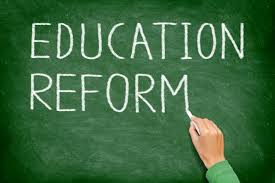Educators: Why You Need To Know About The 1990s And School Restructuring

Over the past few decades, reform trends have risen and fallen from prominence. However, one early system has had long-lasting effects that likely still resonate in your classroom today. What was this long-lasting change-up? School restructuring.
The notion of restructuring became popular in the late 1980s and early 1990s, primarily in reaction to the failure of previous attempts to improve existing education structures through reform. The goal of restructuring was to change the organizational structure of schools in ways that supported student learning. Three main areas were the focus of restructuring school reform efforts during this period.
First, teachers were to have a larger role in school management functions and also to have greater autonomy and flexibility in choosing instructional methods and materials. With more input into school management, teachers would also have a forum in which to contribute to using the learning environment, school resources, and time at school to improve student learning. Second, student learning and achievement was another area of focus for restructuring efforts. With changes in teacher roles and responsibilities in the learning environment, proponents of restructuring believed students would have increased opportunities to learn and could learn at higher, more rigorous levels. Third, restructuring was to make schools more inviting places that would be more aware of and responsive to the needs of students and their families.
A number of reforms were implemented during the 1990s that were consistent with the notion of restructuring. Stricter requirements for graduation were implemented, which included increases in the number of high school credits as well as changes in course requirements. For example, all students were required to complete courses in math and science, even though levels of difficulty in courses existed. There was general agreement that longer days with more quality instruction were needed to improve student achievement, and a number of schools pursued reforms focused on increasing the amount of time available for students to focus on learning.
Standards-based education also emerged during this period. Based on the requirements of postsecondary education, which were established at the time, specific standards were set regarding what academic and practical knowledge students were required to gain during their time at various stages of school. These requirements have changed since standards-based education was introduced, and accordingly, the test content requires continuous review and updating. Students are tested based on these standards using standardized measures. Student and school performance is used as an indicator of the success or effectiveness of that school, the staff, and the state.
Higher expectations of teachers were also an outgrowth of the reforms of the 1980s and 1990s. It is important for states to ensure teacher competency by determining the knowledge and skill levels of new teachers as they enter the profession. Requiring new teachers to pass tests at the end of training or before receiving a teaching license is one method currently used to evaluate and ensure teacher knowledge. The testing of teachers is surrounded by debates relating to how and what material to test teachers on, as well as whether or not standards are high enough to render teaching licensure meaningful.
The meaning and purpose of restructuring changed in the 2000s, as No Child Left Behind (NCLB) came into being in 2001. Restructuring now refers to an action taken by states for schools consistently unable to meet annual achievement targets as required by NCLB. In this instance, schools are required to develop restructuring plans designed to improve student achievement. Reorganization of the governance structure is required, with options available to the schools such as adopting a charter and becoming a charter school; replacing some or all school staff, including the principal; or contracting with an outside entity (e.g., EMO) to operate the school.
States are required to sanction poorly performing schools under NCLB regulations, although some also feel it prudent and motivating to reward high-performing schools. These actions are likely based on the fact that recognition and reward have been shown to lead to improved performance among teachers, which is more positive and may have more of an effect than extending sanctions. Other states, however, sanction poorly performing schools, even when they are not required to do so under NCLB. In many ways, rewarding schools and providing assistance to poorly performing schools is more in keeping with the teacher empowerment goals of the school restructuring efforts implemented in the 1990s.
Restructuring was an idea that shook up the American school system – and not in an entirely good way. As an educator, you need to be aware of what it was and what it did so that you can deal with any residue still dusting the classrooms of your school district.





